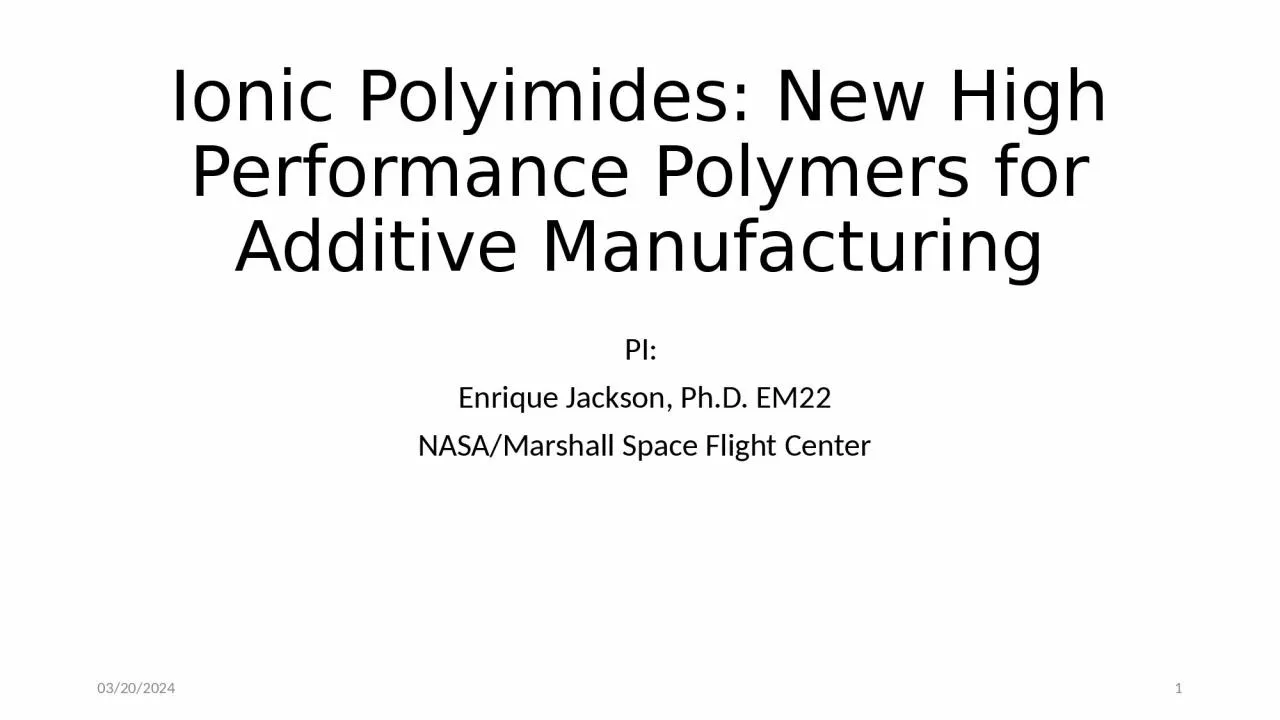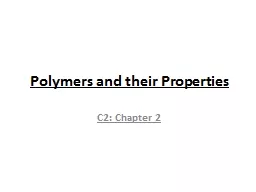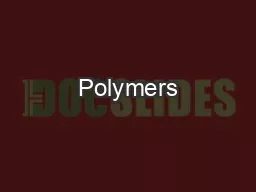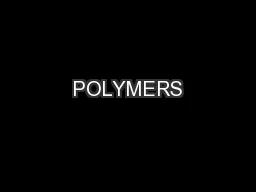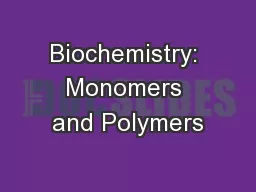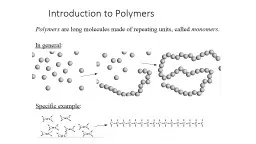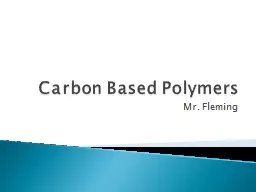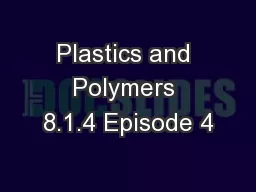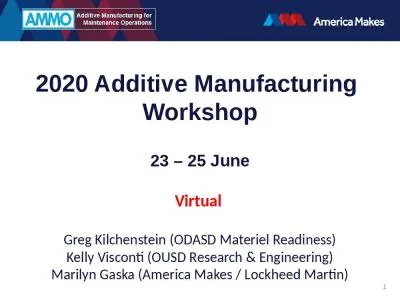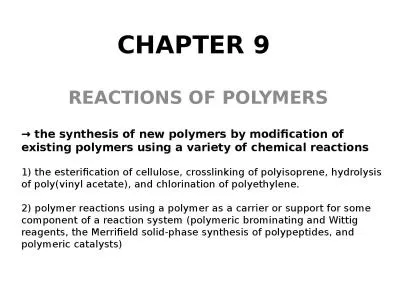PPT-Ionic Polyimides: New High Performance Polymers for Additive Manufacturing
Author : daisy | Published Date : 2024-03-13
PI Enrique Jackson PhD EM22 NASAMarshall Space Flight Center 8132020 1 Collaborators Jason Bara PhD The University of Alabama Tuscaloosa Kendall Byler PhD The
Presentation Embed Code
Download Presentation
Download Presentation The PPT/PDF document "Ionic Polyimides: New High Performance P..." is the property of its rightful owner. Permission is granted to download and print the materials on this website for personal, non-commercial use only, and to display it on your personal computer provided you do not modify the materials and that you retain all copyright notices contained in the materials. By downloading content from our website, you accept the terms of this agreement.
Ionic Polyimides: New High Performance Polymers for Additive Manufacturing: Transcript
Download Rules Of Document
"Ionic Polyimides: New High Performance Polymers for Additive Manufacturing"The content belongs to its owner. You may download and print it for personal use, without modification, and keep all copyright notices. By downloading, you agree to these terms.
Related Documents

